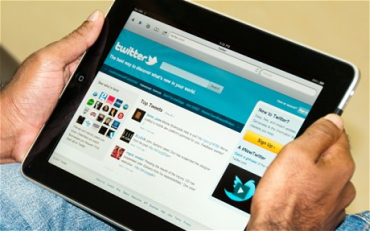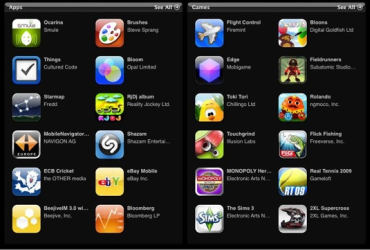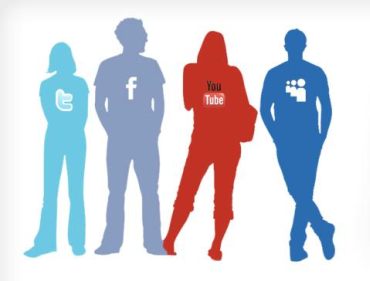A global survey on social media risks reveals a dangerous gap in corporate social media security.
Sixty-three per cent of more than 4,000 respondents in 12 countries said that social media in the workplace represents a serious security risk - yet only 29 per cent report having the necessary security controls in place to mitigate it.
The study surveyed 4,640 IT and IT security practitioners in Australia, Brazil, Canada, France, Germany, Hong Kong, India, Italy, Mexico, Singapore, the United Kingdom, and the United States with an average of 10 years' experience in the field.
Fifty-four per cent are supervisors or above and 42 per cent are from organizations with more than 5,000 employees.
Let us see what IT and IT security practitioners throughout the world, including India, think about security risks associated with employees' use of social media tools.
Click NEXT to to see how experts in India are responding to the threat...
Using Facebook in office? Beware of threats
Image: Most say using social media in workplace is important for business.Most respondents agree that the use of social media in the workplace is important to achieve business objectives.
Although sixty-four per cent believe employees' use of social media in the workplace represents a serious security threat to the organization, just 33 per cent believe they have the necessary controls in place to mitigate or reduce the risk posed by social media.
...
Using Facebook in office? Beware of threats
Image: 39 per cent do not have a policy regarding acceptable use of social media.Thirty-nine per cent do not have a policy that informs employees about the acceptable use of social media in the workplace or are unsure if such a policy exists (24 per cent).
Of those organizations that do have a policy, 49 per cent of respondents say the policy is enforced.
...
Using Facebook in office? Beware of threats
Image: Least acceptable use is downloading apps or widgets.The most acceptable uses of social media in the workplace are networking with friends inside the company (94 per cent) and networking with friends outside the company (73 per cent) followed by use of social network as an email or texting channel (54 per cent).
Least acceptable is downloading apps or widgets from social media sites (four per cent).
...
Using Facebook in office? Beware of threats
Image: Sixty per cent worry about the loss of confidential information.Diminished employee productivity and IT bandwidth are the two most negative consequences due to an increase in the use of social media in the workplace according to 90 per cent and 73 per cent of the respondents, respectively.
Sixty per cent worry about the loss of confidential information or violation of confidentiality policies and 49 per cent think an increase in virus or malware infections will be a consequence of increased usage.
...
Using Facebook in office? Beware of threats
Image: Viruses and malware infections are increasing.According to 48 per cent of respondents, viruses and malware infections are increasing as a result of social media use and 30 per cent are unsure.
Technologies considered by respondents to be most important at reducing or mitigating social media threats are identity and access management, endpoint security solutions and secure web gateway.
...
Using Facebook in office? Beware of threats
Image: Social media is used both for non-business and business purposes.Social media in the workplace is used both for non-business and business purposes.
Forty-seven per cent of respondents say that employees spend more than 30 minutes each day on non-business social media activities and 48 per cent estimate that more than 30 minutes is spent on social media for business purposes each day.
Click NEXT to see how companies are responding to the threat globally...
Using Facebook in office? Beware of threats
Image: Rapid spread of social media may have caught many off guard.The rapid spread of social media may have caught many organizations off guard.
Sixty-three per cent agree that employee use of social media puts their organizations' security at risk.
In contrast, only 29 per cent say that they have the necessary security controls - such as secure web gateways - in place to mitigate or reduce the risk posed by social media.
...
Using Facebook in office? Beware of threats
Image: The United States reports the highest increase in malware.Malware attacks have increased because of social media usage and it's growing.
Fifty-two per cent of organizations experienced an increase in malware attacks as a direct result of employee use of social media, and 27 per cent say that these attacks recently increased more than 51 per cent.
The United States, the United Kingdom, Brazil, Germany and Singapore report the highest increase.
...
Using Facebook in office? Beware of threats
Image: The United Kingdom also saw high number of malware.Only one of the three technologies that respondents favour can block advanced malware and data theft attacks.
Respondents identified anti-virus/anti-malware (76 per cent), endpoint security (74 per cent) and secure web gateways (73 per cent) as important protections.
But only secure web gateways with real-time content analysis and data loss prevention can block advanced malware and data theft attacks, many of which seek entry through social media.
...
Using Facebook in office? Beware of threats
Image: Policies are not getting implemented because of lack of governance.Even if they have a policy that addresses the acceptable use of social media in the workplace, sixty-five per cent say that their organizations do not enforce it or they are unsure.
The top three reasons for not enforcing these policies are: lack of governance and oversight (44 per cent); other security issues are a priority (43 per cent); and insufficient resources to monitor policy compliance (41 per cent).
...
Using Facebook in office? Beware of threats
Image: IT bandwidth has been diminished as a result of social media use.Organizations believe that IT bandwidth has been diminished as a result of social media use.
The top two negative consequences of an increase in social media use were diminished productivity (89 per cent) and reduced IT bandwidth (77 per cent), which increase costs.
Just under half (47 per cent) believe exposure to inappropriate content is a negative consequence.
...
Using Facebook in office? Beware of threats
Image: Sixty per cent use social media for 30 minutes per day.Sixty per cent of employees use social media for at least 30 minutes per day for personal reasons.
The United States, the United Kingdom, France, Italy and Mexico have the highest use of social media for non-business reasons.
Organizations in Germany have the highest use of social media for business purposes.
Regional variations are often compounded by higher local bandwidth costs, which shift the priority of this concern throughout the globe.
...
Using Facebook in office? Beware of threats
Image: Germany has the highest use of social media for business purposes.Countries most likely to see social media as important to meeting business objectives are the United Kingdom, Germany, Hong Kong, India, and Mexico.
The countries with organizations that are less likely to see the importance of social media are: Australia, Brazil and Italy.
...
Using Facebook in office? Beware of threats
Image: Countries least likely to see social media as a threat are France and Italy.Countries most likely to see social media as a serious threat to their organizations are Canada, Hong Kong, and Mexico.
Countries least likely to see social media as a threat are France and Italy.
Organizations in Germany have the most confidence in their ability to address the social media threats.
















article